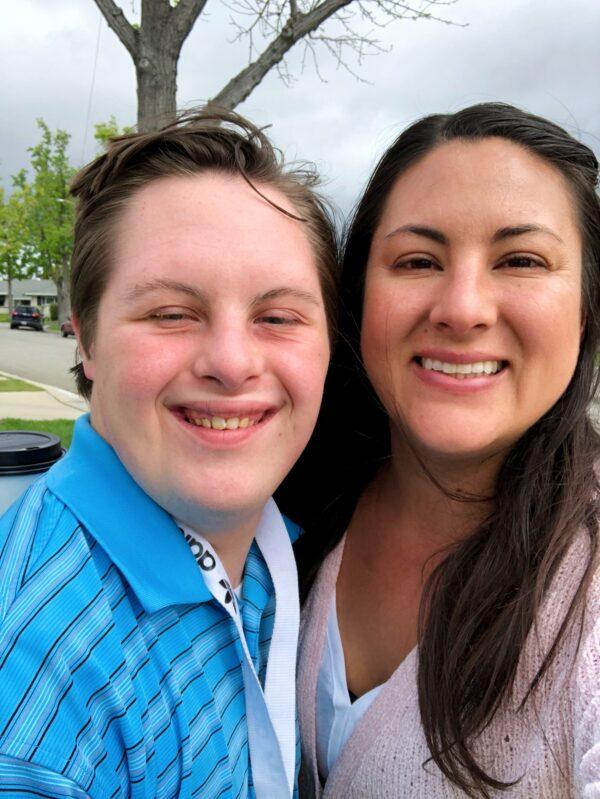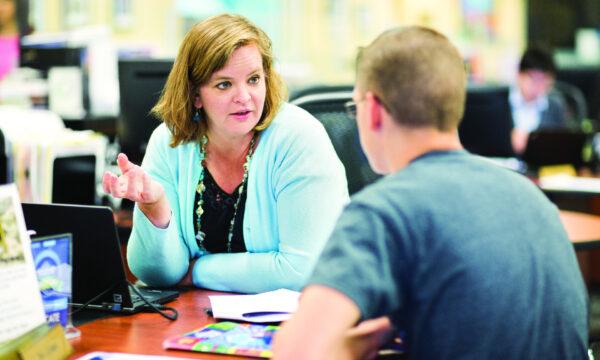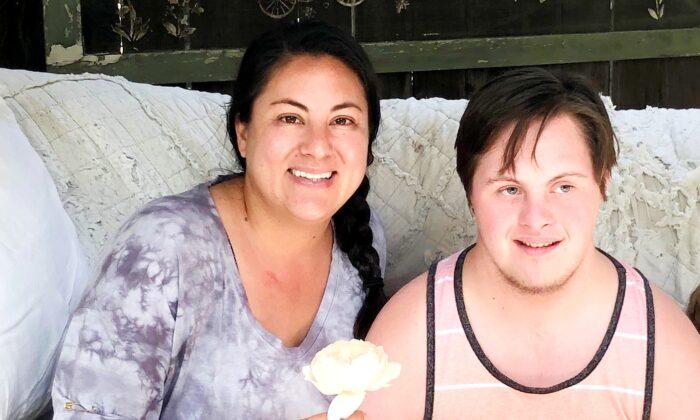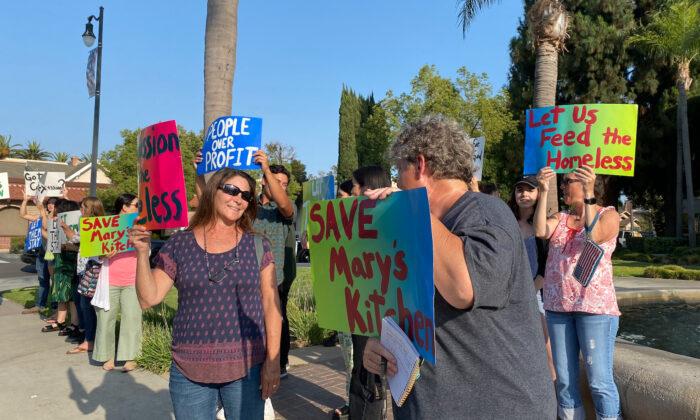ORANGE, Calif.—Bradly Baker, who has Down syndrome, is a sophomore at Orange High School in Orange, California. The transition to at-home learning disrupted a routine that he’s relied on for years.
“He’s very routine, very schedule-based,“ his mother, Lynda Baker, told The Epoch Times. ”He knows Monday through Friday what his day is going to look like. And when this sudden shutdown of the schools happened, that changed.”
Brenda Lebsack, a special education teacher in Santa Ana, told The Epoch Times many of her students have also struggled to understand the interruption to routine.
A Mother’s Fear of Failure
Bradly is “very speech-delayed,” Baker said. “He would be considered a 3- to 4-year-old mentally, but he’s 16. His 3-year-old brother talks better than he does.”Baker has had to reorient her routine to help him with his weekly assignments.

“It takes an effort to sit down and look at the computer and the schoolwork, and try to be the speech therapist, and an occupational therapist, and the PE [physical education] teacher, and his teacher,” she said. “So I’m trying to juggle all of that the best I can.”
Baker does the bookkeeping for her family’s business. Before the pandemic, she would go to her mother-in-law’s house each day to work. Now, she works at home while managing Bradly’s education.
“He has goals we put in place, and annually, we check to see how he met with those goals. And so, as a parent, if he doesn’t meet those goals come October, I’m going to feel like I didn’t do a very good job,” she said.
“On top of that, I’m trying to explain to him that we can’t see our friends,” she added.
Baker says Bradly is very social, and feeds off his peers.
‘Miss PE’
Lebsack is an adapted physical education teacher at seven schools in the Santa Ana Unified School District. Her students have autism, Down syndrome, cerebral palsy, and various other health challenges.“I miss my students terribly and look forward to things getting back to normal,” she said. “However, we were told things may not exactly go back to normal, since there may be a gradual rollout due to social distancing.”
She said “staggered learning” might be the approach—students could be scheduled in morning and afternoon shifts to decrease the number present at one time. But thus far, “the directives have been very vague.”
In the meantime, Lebsack has started a YouTube channel, where she creates customized videos for her students.
Some of her students who have limited language abilities refer to her as ‘Miss PE’—they can’t remember her name, but they remember what she teaches.
Better Progress at Home for Some
Dr. Caprice Young is superintendent for Learn4Life charter schools, which has 25 percent more special-needs students than traditional schools.“We go out of our way to welcome them and craft personalized programs,” she told The Epoch Times.
Many of Learn4Life’s special-needs students have actually thrived better through at-home learning than they did in the classroom.
“About 15 percent of our students have radically increased their engagement and academic progress,” Young said.
She oversees 20 schools and more than 85 learning centers in California, Ohio, and Michigan.

Students on the autism spectrum “have found learning online to be a focused way to excel,” she said. Students with attention-deficit hyperactivity disorder (ADHD) “find it to be less distracting.”
She said she knows it has been challenging in many ways for parents as well as students—the disruption to routine, coping with stress related to the pandemic overall, and more.
But, a silver lining is that “parents have benefited from being able to observe their students’ learning process.”
Baker agrees.
“It’s been hard, but at the same time, I’m really seeing the good in it, as I see how his teachers interact with him,” she said. Bradly’s at-home-learning includes video education and shared fitness classes online.
“I’m sitting there, and I’m taking notes to see how they’re teaching, and what works for him,” Baker said.
She’s also encouraged by “the love that they have for Bradly, and the time that they spend with him.”
“It just kind of brings me to tears, because the teachers are just amazing with these kids, and it makes me appreciate them much more,” she said. “They are so encouraging and uplifting.”






Friends Read Free